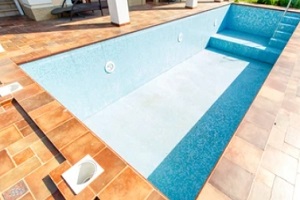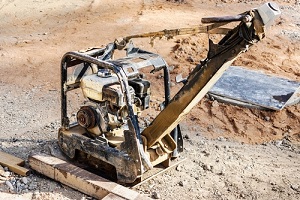 A swimming pool can provide a lot of fun for the right family, but there may come a time when having a pool on your property is more of an inconvenience than a joy. Swimming pools can be very expensive to maintain, so some homeowners choose to have their pool removed to save on maintenance and insurance costs. Worries about the dangers of having a pool spur some families to remove them, while other homeowners wish to free up the yard space occupied by their pool so it can be used for another purpose.
A swimming pool can provide a lot of fun for the right family, but there may come a time when having a pool on your property is more of an inconvenience than a joy. Swimming pools can be very expensive to maintain, so some homeowners choose to have their pool removed to save on maintenance and insurance costs. Worries about the dangers of having a pool spur some families to remove them, while other homeowners wish to free up the yard space occupied by their pool so it can be used for another purpose.
Pool Removal Types
No matter why you have chosen to remove your inground pool, you will be faced with several decisions once you meet with pool removal contractors. First, you will need to decide which pool removal method is right for your purposes. The two main options are a partial pool removal and a full pool removal, and they involve slightly different approaches to backfilling.
Partial Pool Removal
A partial pool removal, or pool fill-in, is a quicker and more affordable option that involves breaking down the top part of the pool and placing it inside the shell. However, this approach can affect your home’s resale prospects because it must be disclosed to future buyers, and it prevents you from building any structures on the area in the future.
In a partial pool removal, less backfilling is required because the rubble from breaking down the top 1.5 to 3 feet of the pool shell will occupy much of the bottom of the cavity. Additional dirt and topsoil will be placed on top of this, and then it will be compacted.
Full Pool Removal
A full pool removal is slightly more involved as it involves breaking down the entire pool shell and hauling the materials away, but it leaves the yard in a condition as though a pool was never there and allows you to do whatever you wish with the space.
In a full pool removal, clean fill dirt must be used for backfilling. Using the rubble from breaking down the pool cavity to fill the space is not permitted. Therefore, a greater amount of backfill is required for full pool removals compared to fill-ins, which contributes to the higher cost of this approach.
Backfill Options
 Backfilling an inground pool is relatively straightforward, but those who opt for a full pool removal will normally need to have a licensed engineer oversee the process to ensure that the area is suitable for new structures. In some areas, a licensed engineer will also need to oversee the compaction of backfill following a partial pool removal.
Backfilling an inground pool is relatively straightforward, but those who opt for a full pool removal will normally need to have a licensed engineer oversee the process to ensure that the area is suitable for new structures. In some areas, a licensed engineer will also need to oversee the compaction of backfill following a partial pool removal.
The specific process used for backfilling after a pool demolition will depend on the type of pool, the budget and how the homeowner intends to use the space in the future. Here is a general look at what is involved in backfilling and the options homeowners have when it comes to backfill materials, whether they opt for a partial pool removal or a full removal.
Pool Backfill Materials
Sand, dirt and gravel are the main materials used for backfilling following an inground pool removal. In many cases, a mixture of different materials will be used. Here is a closer look at each option.
Sand
Sand is often used to backfill the area around a pool during the installation process. When a new pool is being installed, builders need to dig extra space around it so that plumbing can be installed. Once this is complete, this space needs to be filled again. Sand is often used for backfilling at this stage, and it may be mixed with concrete to prevent settling. Sand is not considered an ideal choice for backfilling following a pool removal, however.
Dirt
The type of dirt that is used for pool backfilling is a mixture of dirt, topsoil and tailings. A typical ratio is around 80% dirt and tailings and 20% topsoil. It is essential that clean fill dirt is used. A top layer of topsoil is needed in cases where homeowners wish to plant grass seed.
Gravel
Gravel is considered the preferred option for backfilling inground pool removals because the stones provide more efficient drainage and settle immediately once they are poured. However, a compactor still needs to be used to level the surface of the gravel and allow any remaining gaps to be filled. Because gravel does not absorb water, water simply drains through the stones.
Layer Backfilling
Backfilling following an inground pool removal is carried out very methodically by placing different layers of material such as gravel, sand and dust. The precise size of each layer will depend on the type of land and local guidelines, and each layer is compacted prior to placing the next one.
Compaction During Pool Backfilling
 Proper soil compaction plays a key role in successfully backfilling after inground pool demolition. Failing to compact the soil adequately can cause the soil to settle over time, which can lead to major problems for the yard and anything that is built on the space where the pool was previously installed. Pool demolition experts will typically use a tool such as a vibratory soil compactor or trench roller to achieve proper density compaction.
Proper soil compaction plays a key role in successfully backfilling after inground pool demolition. Failing to compact the soil adequately can cause the soil to settle over time, which can lead to major problems for the yard and anything that is built on the space where the pool was previously installed. Pool demolition experts will typically use a tool such as a vibratory soil compactor or trench roller to achieve proper density compaction.
It is important for homeowners to be aware of any local regulations governing the demolition and backfill of existing swimming pools. It is often necessary to obtain a permit, and the rules regarding the presence of a soil engineer vary. Many municipalities will specify the materials and thickness of backfill layers, such as requiring a minimum of one foot of pea gravel at the bottom of the cavity. They may also specify a minimum relative compaction. Pool removal companies will normally handle these aspects on behalf of their clients.
Reach Out To The Northern Virginia Pool Demolition Team
A pool demolition is a major undertaking that should only be carried out by trained professionals who can ensure the job is done properly and in compliance with all relevant local regulations. Get in touch with the pool demolition team at Dirt Connections to discuss your pool removal project today.
Summary

Dirt Connections was started with one goal in mind: providing quality residential and commercial construction services to clients on time and on budget. Reach out for more information on how we can support your next project.
For your convenience our estimates are free and by appointment. Call 703-940-9949 for a free estimate today!









































